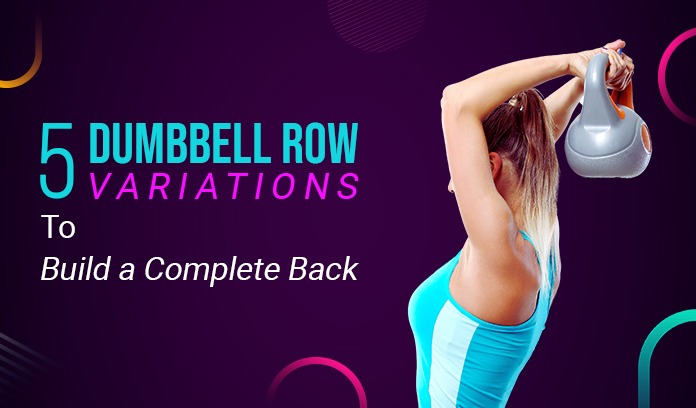Dumbbell rows are highly effective exercises for targeting the muscles of the back, promoting strength, stability, and muscular balance for back exercises.
By incorporating various dumbbell row variations into your workout routine, you can engage different muscles of the back, including the latissimus dorsi, rhomboids, trapezius, and erector spinae.
In this blog post, we will explore five variations of dumbbell rows and discuss their unique benefits in building a strong back. Incorporating these variations into your training routine can help you develop a well-rounded back and enhance your overall posture and functional strength.
Bent-Over Dumbbell Row:
The bent-over dumbbell row is a classic exercise that targets the muscles of the upper back, including the latissimus dorsi, rhomboids, and rear deltoids. It also engages the biceps and core muscles for stabilization.
- Stand with your feet shoulder-width apart, holding a dumbbell in each hand.
- Hinge forward at the hips, keeping your back flat and core engaged.
- Let the dumbbells hang straight down, arms fully extended.
- Pull the dumbbells up towards your ribcage, squeezing your shoulder blades together.
- Lower the dumbbells back down with control.
- Maintain proper form and avoid using momentum to complete the movement.
Single-Arm Dumbbell Row:
The single-arm dumbbell row variation allows you to focus on each side of your back individually, promoting balanced strength and muscle development. It targets the same muscles as the bent-over dumbbell row but provides a unilateral challenge.
- Place one knee and hand on a bench or sturdy surface, keeping your back parallel to the ground.
- Hold a dumbbell in your free hand, allowing it to hang straight down.
- Pull the dumbbell up towards your ribcage, squeezing your shoulder blade.
- Lower the dumbbell back down with control.
- Repeat the movement on the other side, maintaining proper form and stability.
Renegade Row:
The renegade row variation combines the benefits of a plank exercise with a row, engaging the muscles of the upper back, core, and shoulders. It promotes stability and overall strength development.
- Begin in a high plank position with a dumbbell in each hand, hands directly under your shoulders.
- Keep your core engaged and your body in a straight line.
- Row one dumbbell up towards your ribcage, squeezing your shoulder blade.
- Lower the dumbbell back down with control and repeat the movement on the other side.
- Maintain stability throughout the exercise, avoiding excessive rotation or movement of the hips.
Incline Dumbbell Row:
The incline dumbbell exercise targets the muscles of the upper back, particularly the rear deltoids, and rhomboids. It also engages the biceps and core for stabilization.
- Set an adjustable bench to a 45-degree incline.
- Lie face down on the bench with a dumbbell in each hand, arms extended straight down.
- Row the dumbbells up towards your ribcage, squeezing your shoulder blades together.
- Lower the dumbbells back down with control.
- Focus on maintaining proper form and avoiding excessive arching of the back.
T-Bar Dumbbell Row:
The T-bar dumbbell row is a compound exercise that targets the muscles of the upper back, including the latissimus dorsi and rhomboids. It also engages the biceps and core muscles for stabilization.
- Place one end of a barbell into a landmine attachment or secure it against a sturdy surface.
- Straddle the barbell with your feet shoulder-width apart.
- Hold a dumbbell in each hand, allowing them to hang straight down.
- Hinge forward at the hips, keeping your back flat and core engaged.
- Row the dumbbells up towards your ribcage, squeezing your shoulder blades together.
- Lower the dumbbells back down with control, maintaining proper form throughout.
Conclusion:
Incorporating dumbbell row variations into your training routine can significantly contribute to building a strong and powerful back workout.
The bent-over dumbbell exercises, single-arm dumbbell row, renegade row, incline dumbbell row, and T-bar dumbbell row target different areas of the back while engaging additional muscle groups for stability and balance. Remember to start with appropriate weights, maintain proper form, and gradually increase the load as you progress.
By embracing these dumbbell row variations and their value in building a strong back, you can achieve a well-rounded physique, improve posture, and enhance overall functional strength.

